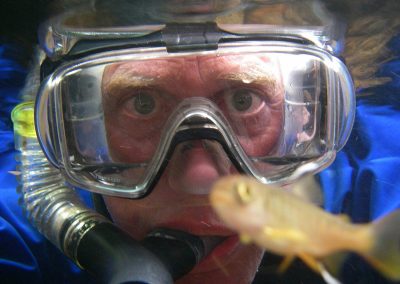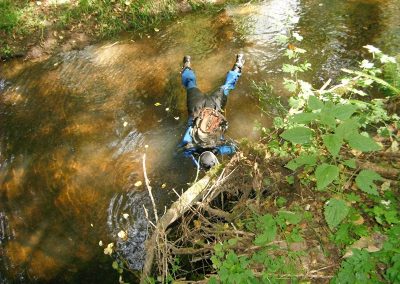Watershed Science
What is a watershed?
A watershed is also known as a drainage basin or a catchment, and can be defined as an area where all the precipitation (rain, snow, sleet, etc.) drains to one common outlet. These outlets may be the outflow of a reservoir, a particular point along a channel where one stream segment (tributary) joins another, or an estuary where freshwater meets the ocean (USGS, 2018).
These freshwater ecosystems may be large or small and are often defined by the surrounding mountain ranges (the ridgelines that separate one watershed from another). Watersheds are usually a combination of creeks, lakes, rivers, ponds, and wetlands. Each one of these components of the watershed is essential for the healthy functioning of the whole.
What is watershed science?
Watershed science is the examination of the human and natural factors that both beneficially and adversely affect freshwater systems. For example, human factors can include pollution from chemical fertilizers and/or disturbance from logging activities; or restoration of natural function with a man-made project like fish passage improvements. Natural factors can include storms, fires or flood events that change the shape, and function of rivers and their adjacent lands.
With many human and natural impacts, watershed dynamics are complex. Understanding and successfully managing watersheds requires a multi-disciplinary collaboration, which we call watershed science, combining: ecology, biology, hydrology, forestry, geography, geology, and other sciences.
In order to foster healthy aquatic ecosystems, we must continuously monitor water quality as well as changes to water quantity. Along with monitoring the water itself, it is important to keep track of important plant and animal species that are native to the system. When key native species start to decline, we use watershed science to implement solutions to bring them back to healthier levels. To illustrate this, in the Pudding River, we have special policies for protecting native salmonids because they are vital to the entire ecosystem – especially in terms of nutrient cycling.
Why do we look at natural systems from a landscape scale?
Many aspects of the environment affect streamflow and overall watershed health. If we look at only water, then we are ignoring the interconnections between land, air, and water. To exemplify these interconnections, there is a constant exchange between the soil and the groundwater. To appreciate these natural interactions, we study the soil characteristics, types of plants and animals (invasive vs. native), microscopic organisms (like bacteria and fungi), human water usage, air pollution, and the land uses within the watershed (urban development, mining, logging, farming, etc.). Looking at land uses is particularly important because human activities, such as building housing developments near water, can seriously degrade aquatic habitats.
Each action we take will impact the water quality downstream. We must remember that we all live downstream of someone else and someone else lives downstream of us. Even if we do not live near a water body, our actions in town will eventually impact the water system. We can see, for example, that storm runoff carries pollutants (oil, paint, trash) from our city streets to freshwater ecosystems. Looking at the landscape scale allows us to take a holistic view of our watersheds and create more sustainable solutions. Ultimately, watershed science recognizes the interdependence of Earth’s human and natural systems and the important role people can take in their protection, restoration, and enhancement, for the benefit of their own health and well-being.



